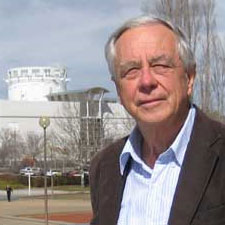1971 - Fellow of the Australian Academy of Science (FAA)
1987 – Fellow of the Royal Society (FRS)
Nature numbers 184, 186 & 198 for early rock dating breakthroughs; and No. 321 for the Jack Hills ancient zircons. See also:
Froude, D.O., Ireland, T.R., Kinny, P.D., Williams, I.S. and Compston, W. 1983. Ion microprobe identification of 4100 to 4200 Ma-old terrestrial zircons. Nature, 304, 616-618.
Geochim. et Cosmochim. Acta 1970 – 1975, Science No. 28, 1972, for papers on the dating of lunar material.
M.W. McElhinny (ed.): The Earth: It’s Origin, Structure and Evolution; Chapter 12: Sr-Isotope Evolution of Granitoid Source Rocks, W. Compston and B.W. Chappell. Academic Press, 1979.
Australian Journal of Earth Science 34: Compston, W., Williams, I.S., Jenkins, R.J.F., Gostin, V.A. and Haines, P.W. 1987. Zircon age evidence for the Late Precambrian Acraman ejecta blanket. (Dating of the Lake Acraman, South Australia, large meteorite impact.)


